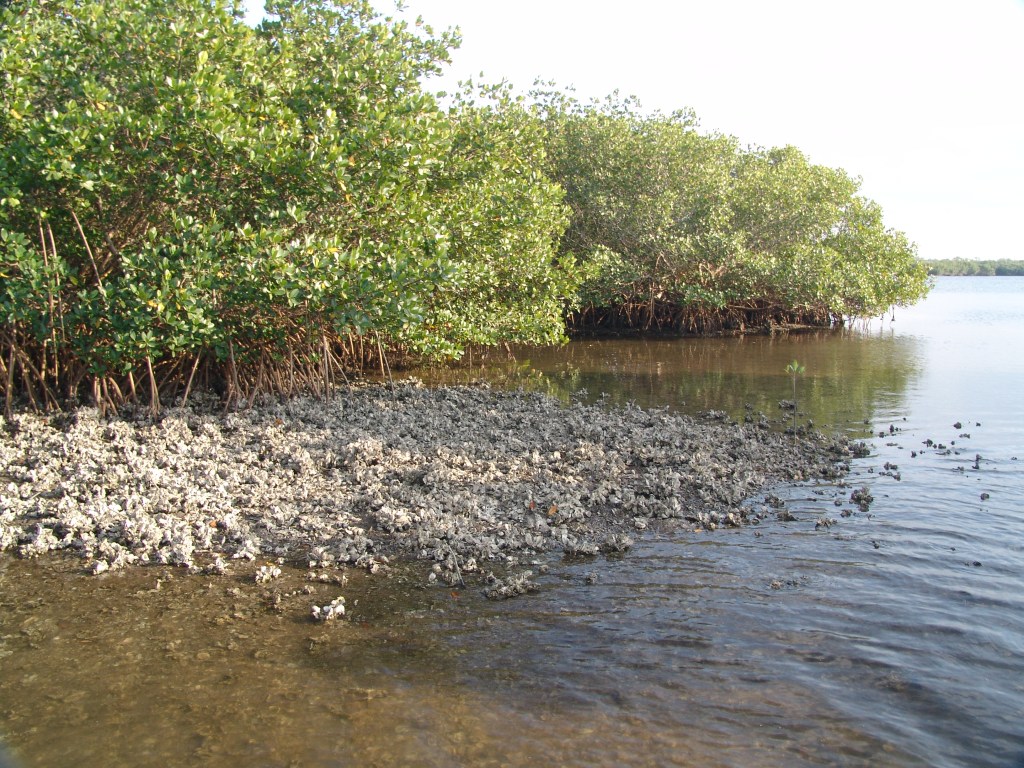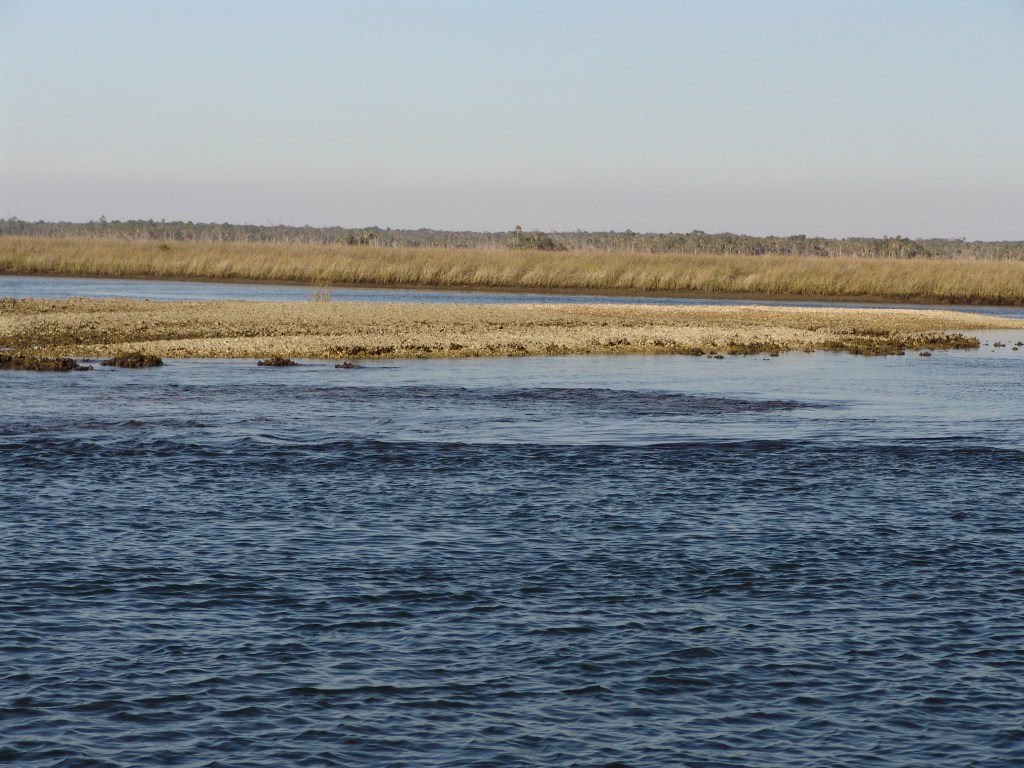
They may look like a random pile of clutter, but oyster bars are much more than mundane mollusk mounds. In fact, where redfish are concerned, few habitat features can compete with the magnetic appeal.
Sure, redfish aren’t taking time to crack open many oysters, but the diverse array of marine life living in and around these bivalve colonies presents an irresistible buffet. With lots of twists, turns and hidey holes, an oyster bar holds loads of invertebrates and various crab species, while attracting the finfish forage like mullet and pinfish that redfish often seek.

Capt. Ryan Rickard, who partnered with Bassmaster Elite Series pro Chris Zaldain to win the inaugural Yamaha Bassmaster Redfish Cup Championship presented by Skeeter (Nov. 12-14, 2021 in Port Aransas, Texas), knows well the oyster bar attraction. In his view, it’s a shell game that definitely favors fishermen.
“Redfish love to hang around structure, so oyster bars are a very good place to start,” Rickard said. “If you’re going into an area and you don’t know what’s going on, if you can find Google Earth maps of oyster bars, that’s a very common place that we always try to target.
“It’s visual and you can find them fairly easily, but also you’ll typically find baitfish surrounding an oyster bar. When you’re seeing tight clumps of mullet, that’s telling you that there is some type of structure they’re hanging around, so that’s another visual indication.”
Bar hopping
Oyster bars may be random in occurrence, while some areas find backwater creeks and coves offering sprawling oyster habitat with multiple prominent bars interlinked by lower sections. High tides may cover most or all of these redfish theme parks, but extreme low tides offer a strategic look at the endless feeding opportunities that’ll hold a red’s attention for hours.
Generally, redfish are not terribly picky; they’ll dine at oyster bars of all sizes. Rickard, however, prefers more modest structures. Perhaps it’s the more concentrated focus, but he’s considerably more confident on the isolated stuff.
“I like small oyster bars; I feel like I don’t seem to catch as many redfish on those large, sprawling bars,” he said. “Sometimes, you won’t even have an oyster bar; you’ll have bowling ball size clumps of oysters.
“You’ll have multiple targets that create travel lanes for redfish. I feel like this can be more productive than when the oysters form a bar.”
When he’s targeting a complete oyster bar, Rickard knows the sweet spot lies at what he calls the “roll-off” — the hole or trough at the deeper end. Dug by tidal action, the roll-offs are the approach and retreat spots, so they typically see the most traffic.
When it’s right
While oyster bars hold year-round potential, Rickard says he does his best work during jacket season.
“Anytime the water temperatures are a little cooler, those redfish tend to hang on those oyster bars because they warm the water a little quicker,” he said. “I really like oyster bars in the winter, but that (thermal) appeal could start in the fall, depending on how quickly we start getting some cold fronts.”
As for daily conditions, Rickard said the bite could happen most any time, but sunny days give him the highest hopes.
“That sun beating down on the bar will heat it the fastest,” he said. “It may only be a few degrees warmer, but that will draw these fish to that oyster bar.”
Regarding tides, incoming, or “rising” water allows fish to expand their feeding exploration progressively higher onto oyster bars, where they’ll enjoy greater access to forage recently protected by meager depths. Falling tides reverse the movements and ultimately send reds toward their low-water hangouts.
The process is gradual on both ends of the tide. Considering how fish move incrementally upward on the rise, they won’t simply depart as soon as the outgoing tide starts. They’ll feed their way off the bar until the water level no longer supports their comfort level.
Get bit
With tides playing a key role in redfish position, Rickard said bait selection also must be tailored to water level.

High tide: When water covers most of the bar, Rickard prefers a topwater to temp the aggressive reds rounding up baitfish pinned against the structure. His choices are the MirrOLure Top Pup and Yo-Zuri’s 3D Inshore Top Knock.
Mid-outgoing: As the water starts to fall, redfish will slide off to the sides of an oyster bar, but they’ll still blast a baitfish profile, so Rickard sticks with the topwater (adjusting outward with the dropping water).
End of the fall: When declining depth takes the topwater out of play, Rickard turns to an Aqua Dream spoon, a Z-Man Ned ShroomZ with a Z-Man TRD Ticklers body or a Berkley Gulp! Shrimp.
“You can rig that Gulp! Shrimp multiple ways,” Rickard said. “You can rig it through the head on a jig, or remove the tail (and rig it backward) for more casting distance.”
Closing tips
A couple of thoughts to round out the oyster bar lesson.
Rough neighborhood: Look closely at an oyster and you’ll see it differs from a clam’s relatively smooth, rounded profile. Oysters are more oblong and their shells sport ridges, high points and treacherously sharp edges that’ll leave you with a nasty reminder for careful approach.

The shells’ lower profile may seem like little threat to your leader, but a couple of points merit mentioning. First, hooked redfish often grind their faces against the bottom to remove the sudden irritant. Even if the actual leader remains clear, a couple good scrapes on your knot and it’s bye-bye redfish — and your confiscated lure.
In addition to this directed self-release effort, a hooked red may dash around the end of an oyster bar, or a protruding point and subject your line to more abrasion than it’s made to withstand. Sad truth — rough, sharp surfaces plus pressure equals heartbreak.
You can’t prevent either frustration, as these fish aren’t wired to make this easy on us. You can, however, keep that rod tip high and the leverage firm in hopes of keeping a hooked redfish clear of the line-clipping shells.
The other precaution — check your line/leader often. It’s Fishing 101, but when the reds are chewing, it’s easy to overlook what can save you a painful loss.
Signs of life: Rickard’s no snob, but when it comes to sizing up redfish opportunities, he simply will not waste time in unfavorable scenarios. Either show him the goods or it’s peace out.
“Anytime you’re looking for oyster bars, make sure it’s active — bait flipping, bait pushes, birds,” Rickard said. “If I don’t see life on that bar, I probably wouldn’t bother fishing it.”





